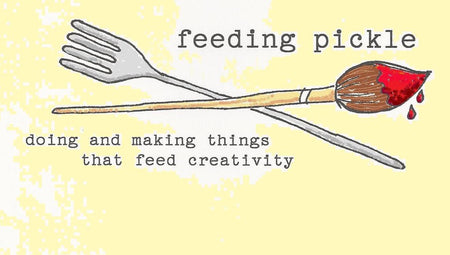The intrigue of watching two items become one--Baking cookies by mixing and heating ingredients of various scent and size--Constructing a house of sticks and nails--Dye adhering to fabric to create magnificent new colors and designs--It never grows old.
Dye-ing has become a source of never-ending intrigue here. While natural dye has been our most practiced (with our scope ever widening, so that we will never run out of ideas or modifications to experiment), we enjoyed a simple project with Kool-Aid dye for some vibrant and fun color experimentation. Using food-safe dye makes this a wonderful hands-on project for all ages!

Don't think that dye-ing yarns is just for the knitters and crochet-ers. Before you question what would you ever do with a ball of dyed yarn and walk away from trying this project, read A Big Ball of String by Marion Holland. A boy with bits of collected string finds the most delightful uses on a day home from school. Around here, a ball of string is a most treasured possession! A ball of string is a ball of potential. It is a tool to create so much more.

Keeping basic supplies (string, pencils, paper, wood, nails, food, paint, nature) available lends to creative ideas when boredom is tempted to settle in. They beg us to answer the question: what can this become?
So can you do with a ball of yarn/string?
As the boy in the book exclaims,
"But what could I DO
With a little ball of string?
What could I do
With a SMALL string ball?
With a BIG ball of string,
I could do ANYTHING.
Anything, anything,
ANYTHING AT ALL!"
Here are just a few ideas to start:
-wrap packages
-create a tangled web obstacle course
-learn to chain stitch in our video here
-learn to finger knit
-learn to knit and crochet
-weave a coaster
-wrap sticks in an array of color and display a collection in a vase
-needle felt colored wool bits onto wool dryer balls
Are you bursting with you own ideas to try now?
Here is how we dyed our yarn:
We chose to use wool yarn, as protein fibers (from animal sources) accept dye more readily than cellulose (plant) fibers.
Soak yarn in a bowl of one part vinegar to three parts water. Yarn should be well saturated before beginning. We used slightly warm water. Use care when working with wool to not agitate the yarn and cause it to felt.
(*To learn what it takes to felt wool, cut a bit of wool yarn, add a little soap to your hands and rub the yarn in warm water. Learn what it takes to change the texture of the yarn--don't be afraid of it. Dive right in and figure out how it works!)
When yarn is saturated, gently squeeze the water from the yarn.
We opted for three different experiments:
Snow dye, color wheel, and speckle dye-ing.
--Snow dye-ing: Set yarn on a rack with drip pan beneath. Cover with snow. Thin and thick levels are fine. (Ice cubes are an option in the absence of snow.) Sprinkle Kool-Aid over the snow-covered yarn and wait for the snow to melt and for the color to reach the yarn. Thicker snow meant more melted moisture to carry the color through more layers of yarn. Thinner snow cover kept the color more saturated on the top of the yarn.
*Use colors that combine well. We used yellows, reds, and oranges. Choosing colors that cross the color wheel will create "muddy" colors where they meet on the yarn.

--Color Wheel: We mixed one part vinegar to three parts water into three pint jars, added 2 packets of each primary color (yellow, blue, and red) Kool-Aid to the individual jars. Dividing our long loop of yarn into thirds, we placed one third of the yarn into each of the three jars. Ideally we hoped the color would climb, but it did not. The color became depleted in the jar, so we added more Kool-Aid powder. Again, no climbing. After 24 hours, we laid the yarn loop out and gently poured the colors on to allow them to run between the primary colors and allow them to combine into the secondary colors (orange, green, purple).

--Speckle Dye: This may have been the favorite. Over damp yarn, sprinkle the Kool-Aid powder in small bits. We opted to spritz the sprinkled powder with more vinegar/water solution. We actually repeated this technique a second time on our yarn. After steaming and drying it the first time, we decided to add more color.

To finish our yarn and set the color, each yarn hank was gently wrapped in plastic wrap, and steamed for about thirty minutes, or until the color did not run and any water in the yarn ran clear. We have used the microwave method before, but found using a steamer basket in a pot on the stove to be preferable. The microwave version creates an unpleasant smell. The stove top version did not.
After removing from the steamer and allowing to cool and dry, the yarn was gently rinsed again with a tiny bit of gentle detergent to remove any Kool-Aid residue. Again, we used care to not felt the yarn.
Now we decide how to use our big ball of beautifully colored string!
Always be creative,
Marie Winfield

